#joan van dillen
Photo

House Kronenberg (1961-63) in Wageningen, the Netherlands, by Gerrit Rietveld with Joan van Dillen
401 notes
·
View notes
Photo

Gerrit Rietveld Academy (1959-67) in Amsterdam, the Netherlands, by Rietveld Van Dillen & Van Tricht. Photo by Kim Zwarts.
#1950s#art academy#glass#steel#architecture#netherlands#architektur#amsterdam#gerrit rietveld#joan van dillen#jan van tricht
173 notes
·
View notes
Photo
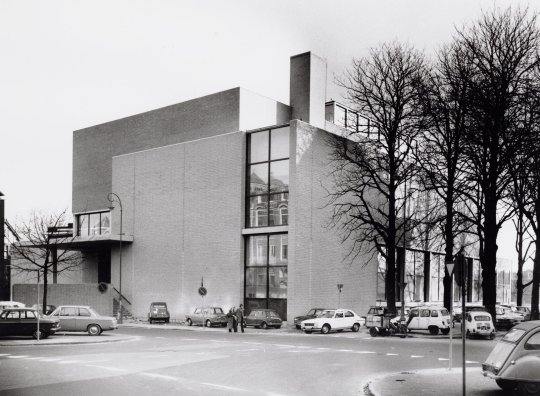
Rijksmuseum Vincent van Gogh (1963-73) in Amsterdam, the Netherlands, by Rietveld Van Dillen & Van Tricht
#1960s#museum#architecture#netherlands#architektur#amsterdam#gerrit rietveld#joan van dillen#jan van tricht
180 notes
·
View notes
Text


To this day Frits Bless’s book is the only biography of Gerrit Rietveld but when it was published in 1982 it wasn’t very well received: reviewers criticized the absence of Rietveld the human being, valid criticism but one that only tells half of the story. First and foremost Bless’s biography is the story of Gerrit Rietveld the artist, architect and designer including his professional network. The author doesn’t snoop around his tense and complicated family life but focuses on his artistic achievements and developments. Divided into three main chapters Bless follows Rietveld from his humble beginnings in the workshop of his father in Utrecht to his late successes of the 1950s and early 1960s. In between the reader gets to hear about the major issues bothering Rietveld, his activities in all sorts of associations and about his socialist leanings. During the years of German occupation Rietveld also forged German stamps and documents in order to support the Dutch resistance. He himself had been banned from practicing architecture as he refused to enter the German-backed association of Dutch artists.
What is also noteworthy is the fact that Rietveld only by the early 1950s received the attention and appreciation he undoubtedly deserved: with the first retrospective exhibitions of the De Stijl magazine/movement came the insight that Rietveld’s contribution to Dutch design and architecture had been significant, although up to that point he hadn’t received any major public commissions. This circumstance changed consecutively and resulted in an unprecedented number of projects ranging from houses to schools and museums. Due to a deteriorating health and the significantly larger commissions Rietveld in 1961 entered a partnership with Joan van Dillen and Jan van Tricht. Rietveld died from a heart attack on June 25 1964 at his famous house in Utrecht.
At this point one must object contemporaneous reviewers insofar as Frits Bless’s book is a concise and very readable professional biography of Gerrit Rietveld that admittedly isn’t intimate but undoubtedly informative.
#gerrit rietveld#biography#de stijl#dutch architecture#architecture#netherlands#design history#book#vintage book
31 notes
·
View notes
Photo
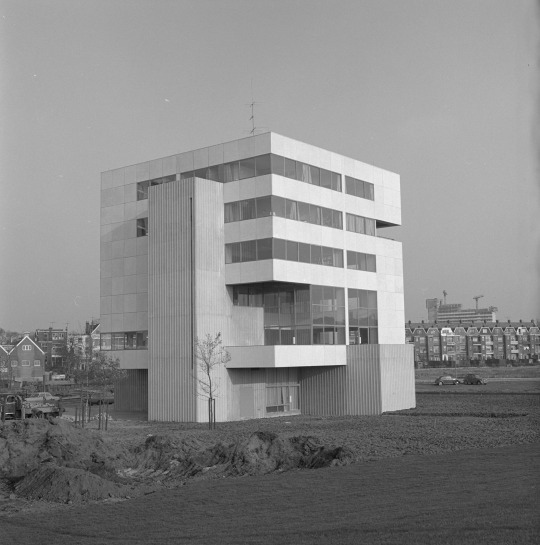
Ecumenical Center (1961-68) in Rotterdam, the Netherlands, by Rietveld Van Dillen & Van Tricht. Both Gerrit Rietveld and Joan van Dillen died before the completion of the building.
#1960s#community center#concrete#architecture#netherlands#architektur#rotterdam#gerrit rietveld#joan van dillen#jan van tricht
391 notes
·
View notes
Photo

Gerrit Rietveld Academy (1959-67) in Amsterdam, the Netherlands, by Rietveld Van Dillen & Van Tricht
#1950s#art academy#glass#steel#architecture#netherlands#Architektur#amsterdam#gerrit rietveld#joan van dillen#jan van tricht
157 notes
·
View notes
Photo
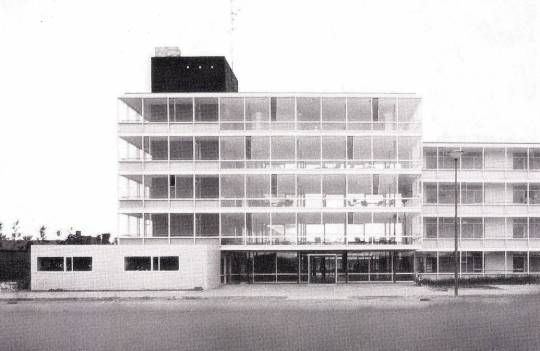
Home for the Elderly “De Nudehof” (1964-65) in Wageningen, the Netherlands, by Joan van Dillen in the Office of Rietveld Van Dillen & Van Tricht
150 notes
·
View notes
Photo

Church “De Hoeksteen” (1960-65) in Uithoorn, the Netherlands, by Rietveld Van Dillen & Van Tricht
#1960s#church#concrete#architecture#netherlands#architektur#gerrit rietveld#joan van dillen#jan van tricht
78 notes
·
View notes
Photo
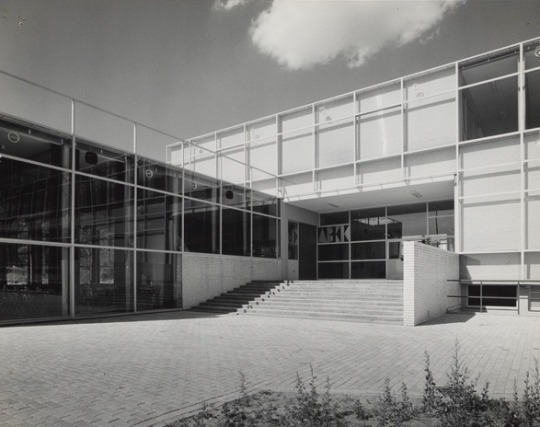
Art Academy (1957-63) in Arnhem, the Netherlands, by Gerrit Rietveld with Hubert-Jan Henket & Joan van Dillen. Photo by Jan Versnel.
163 notes
·
View notes
Photo
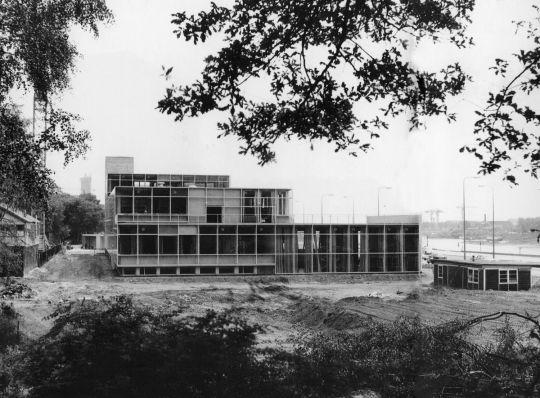
Art Academy (1957-63) in Arnhem, the Netherlands, by Gerrit Rietveld with Hubert-Jan Henket & Joan van Dillen
679 notes
·
View notes